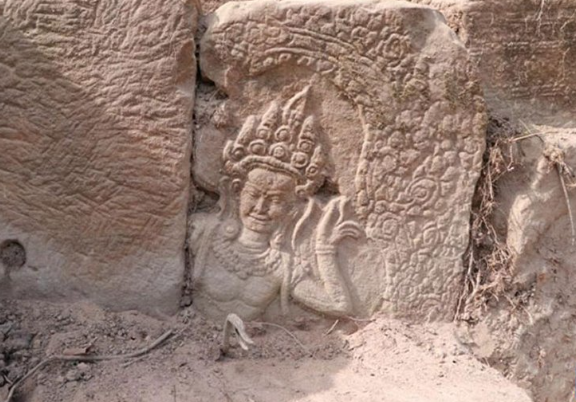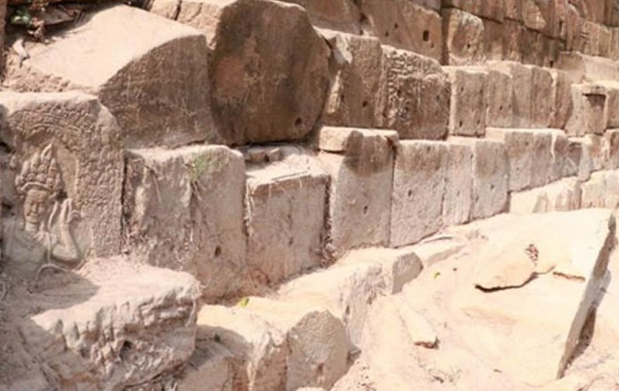Apsara Carvings Dated To 12th Century Uncovered At Takav Gate In Angkor, Cambodia

Archaeologists have discovered pieces of the 12th century Apsara, or fairy carvings, in the Angkor Archaeological Park in northwest Cambodia’s Siem Reap province, the APSARA National Authority (ANA).

Apsara carving was found in Angkor Archaeological Park in Siem Reap province, Cambodia. Image credit: ANA/Handout via Xinhua
The place of this archaeological discovery is the northern wall of the causeway of the Angkor Thom temple’s Takav Gate at Angkor Archaeological Park, situated in northwestern Cambodia.
The Takav Gate is one of the five gates of the Angkor Thom, which was built in the late 12th century by King Jayavarman VI, king of the Khmer Empire, and one of the most forceful and productive rulers of the Khmer (Cambodian) empire of Angkor, with several great military achievements recorded during his reign.
The carvings were spotted during restoration work when the archaeologists were clearing vegetation and removing soil from the lower part of the structure.
“These Apsara carvings are similar to the Apsara on the pillars of the Bayon Temple, while other stone carvings have the same shape as the ones that decorated the structure of the Takav Gate,” said archaeologist Kim Seng Pheakdey.

Apsara Carving. Image credit: APSARA National Authority (ANA) via Xinhua
The stone pieces decorated with Apsara carvings and other decorative sculptures were used as the northern wall of the causeway, Xinhuanet
The Bayon-style Apsara carvings might have been built simultaneously with the Takav Gate and the Bayon Temple during the late 12th century and early 13th century, additionally informed the archaeologist.
The restoration works conducted in the area are necessary to locate Deva statues ”that had fallen into the moat in the north of the causeway in order to restore them back to their original positions”, Pheakdey informed.
For several centuries Angkor was the center of the Khmer Kingdom. With impressive monuments, several different ancient urban plans, and vast water reservoirs, the site is a very special concentration of features testifying to an impressive advanced civilization. Temples such as Angkor Wat, the Bayon, Preah Khan, and Ta Prohm, exemplars of Khmer architecture, are closely linked to their geographical context as well as being imbued with symbolic significance.
The architecture and layout of the successive capitals bear witness to a high level of social order and ranking within the Khmer Empire. Angkor is therefore a major site exemplifying cultural, religious, and symbolic values, as well as containing high architectural, archaeological, and artistic significance.
